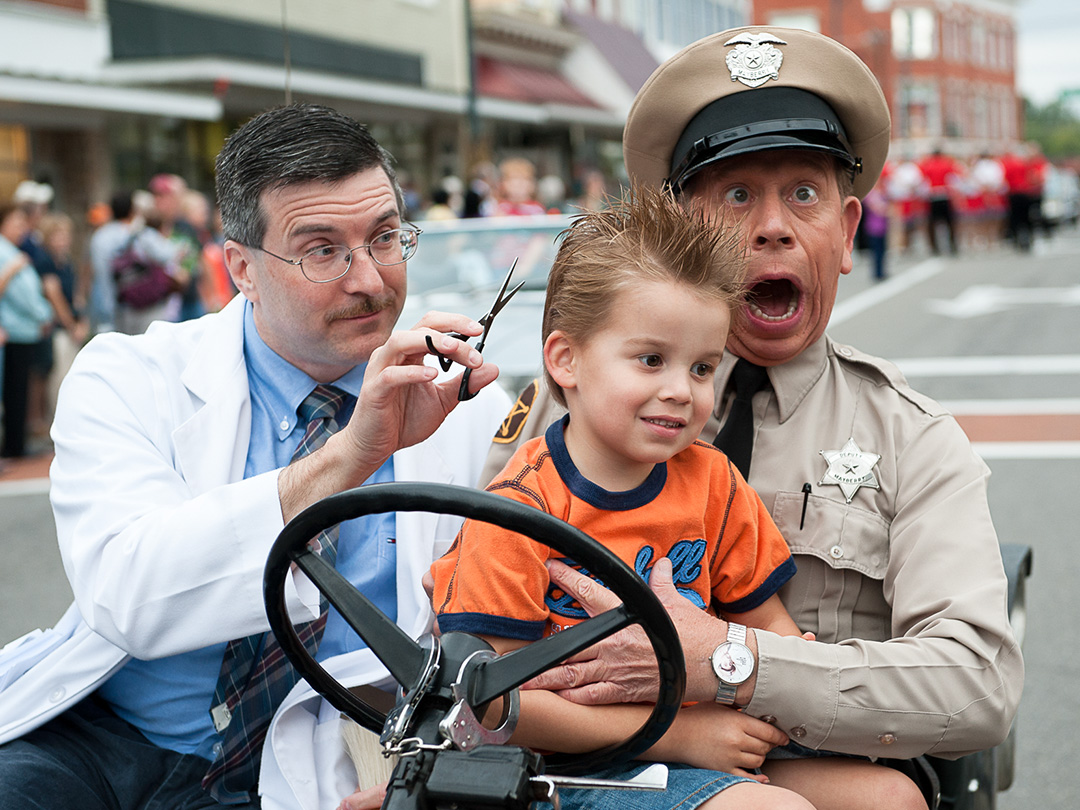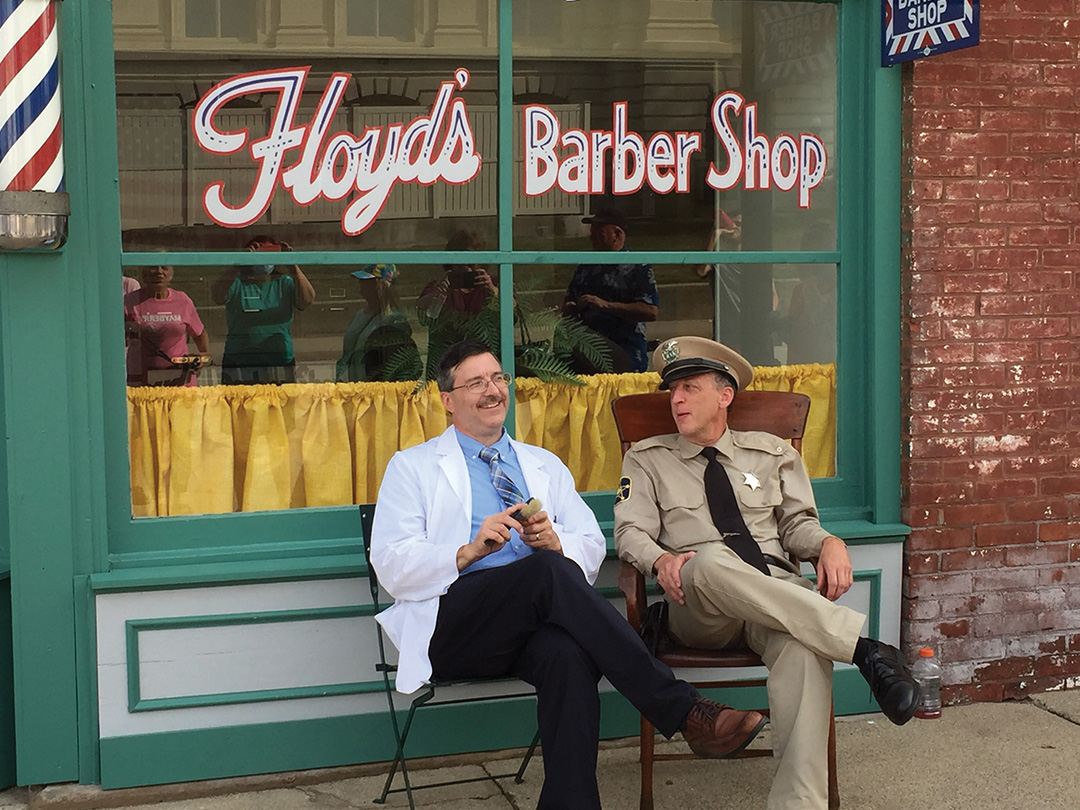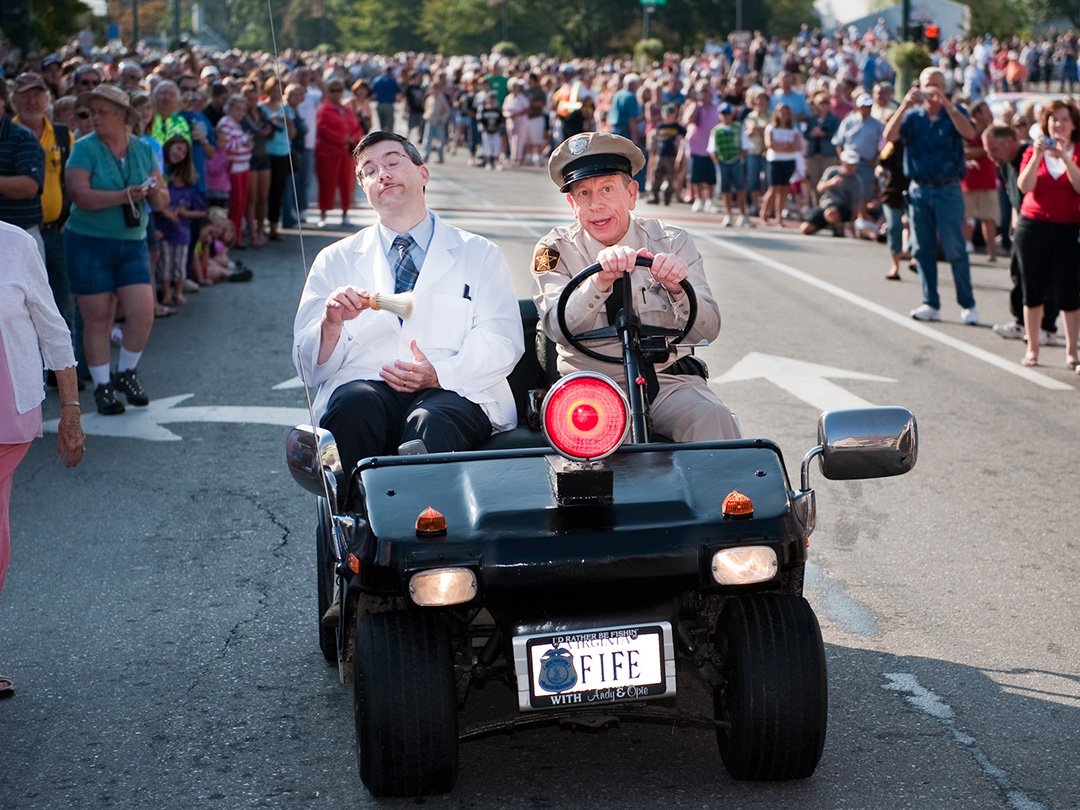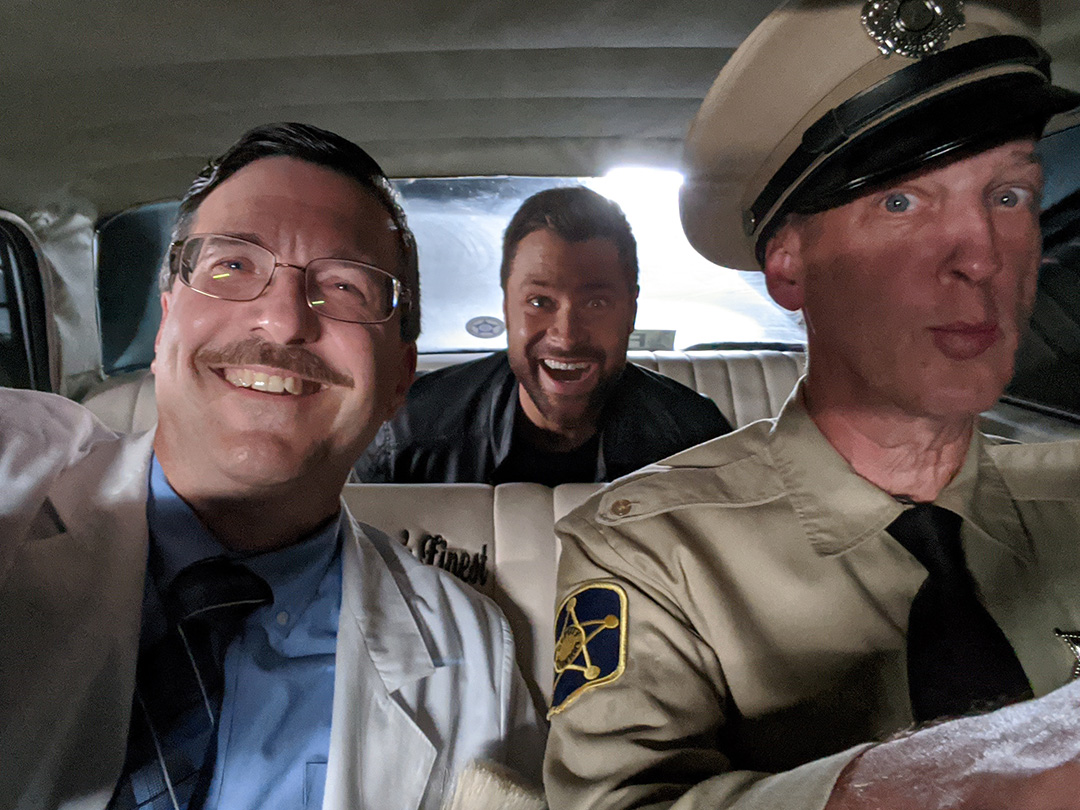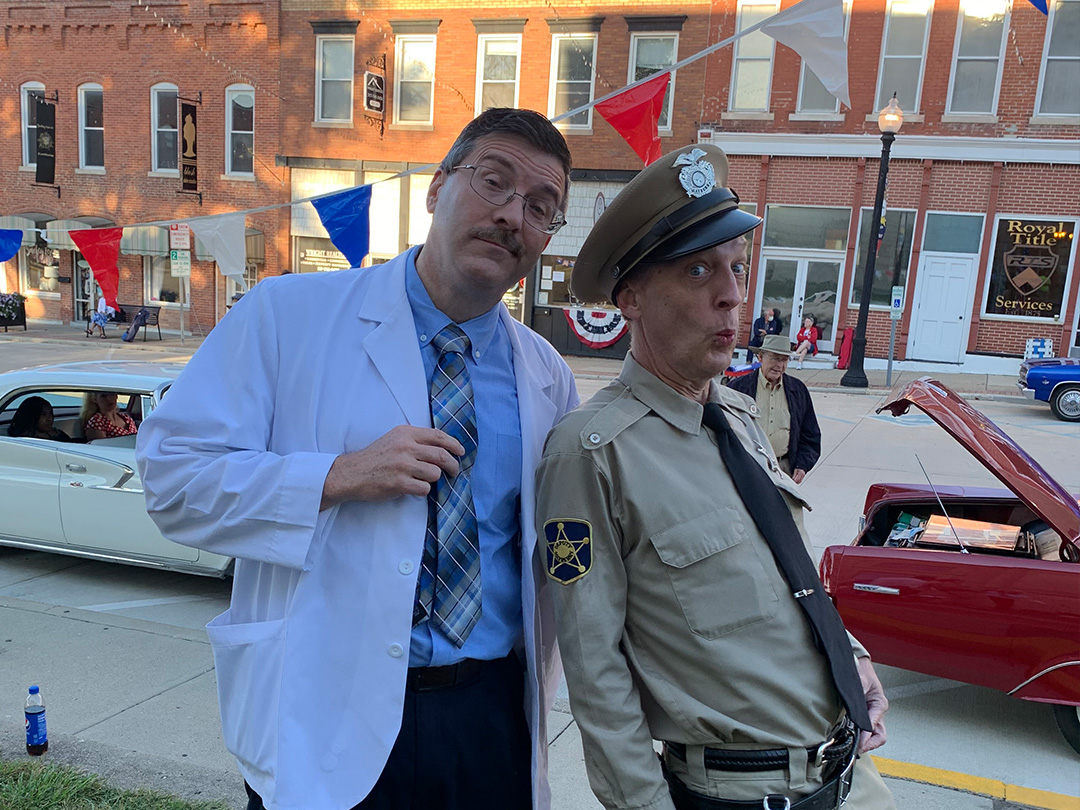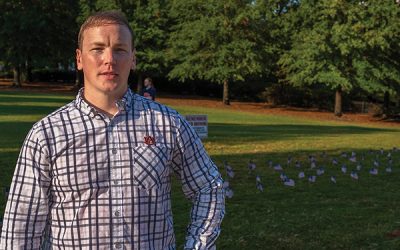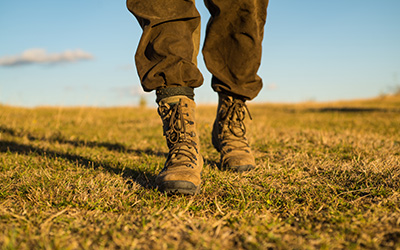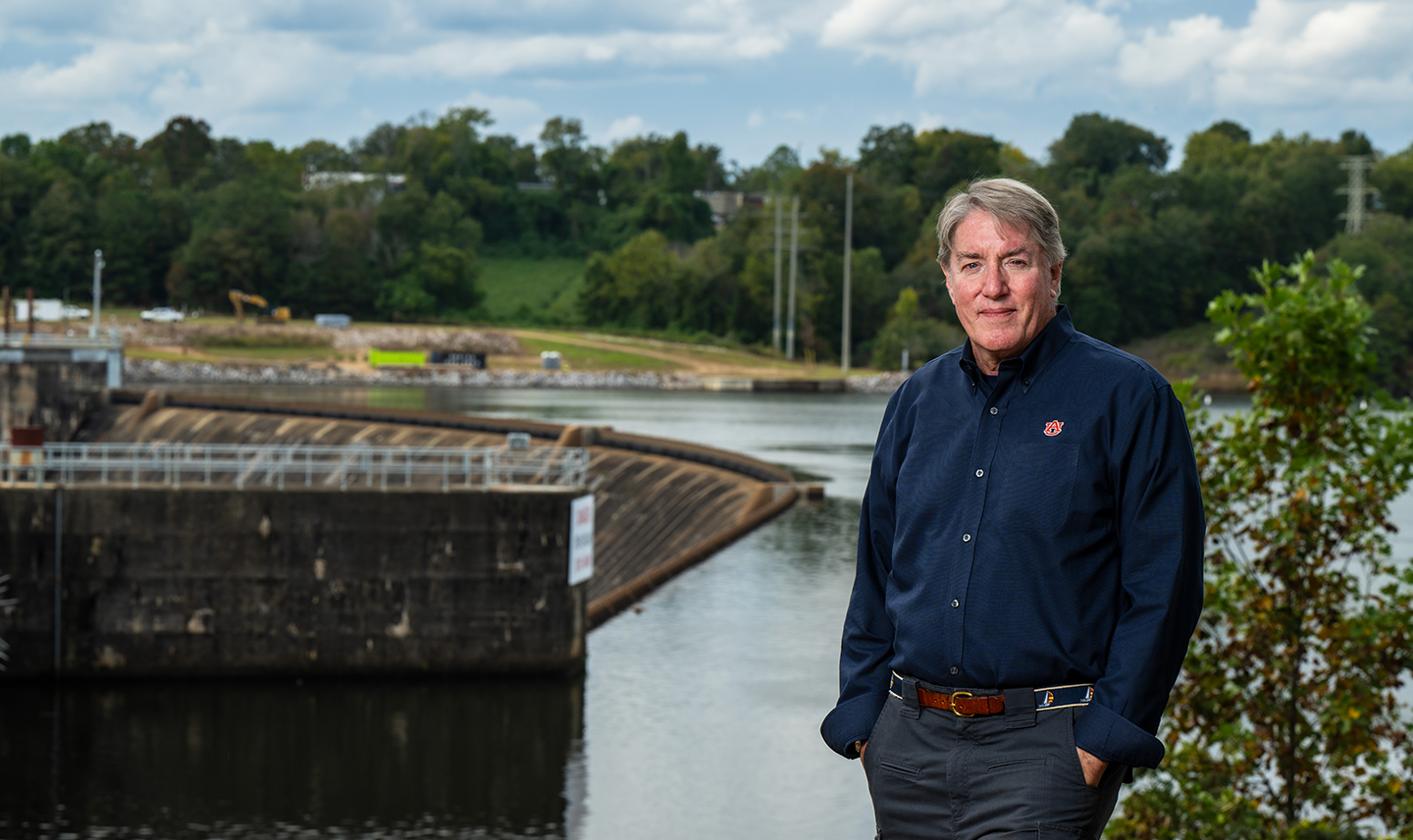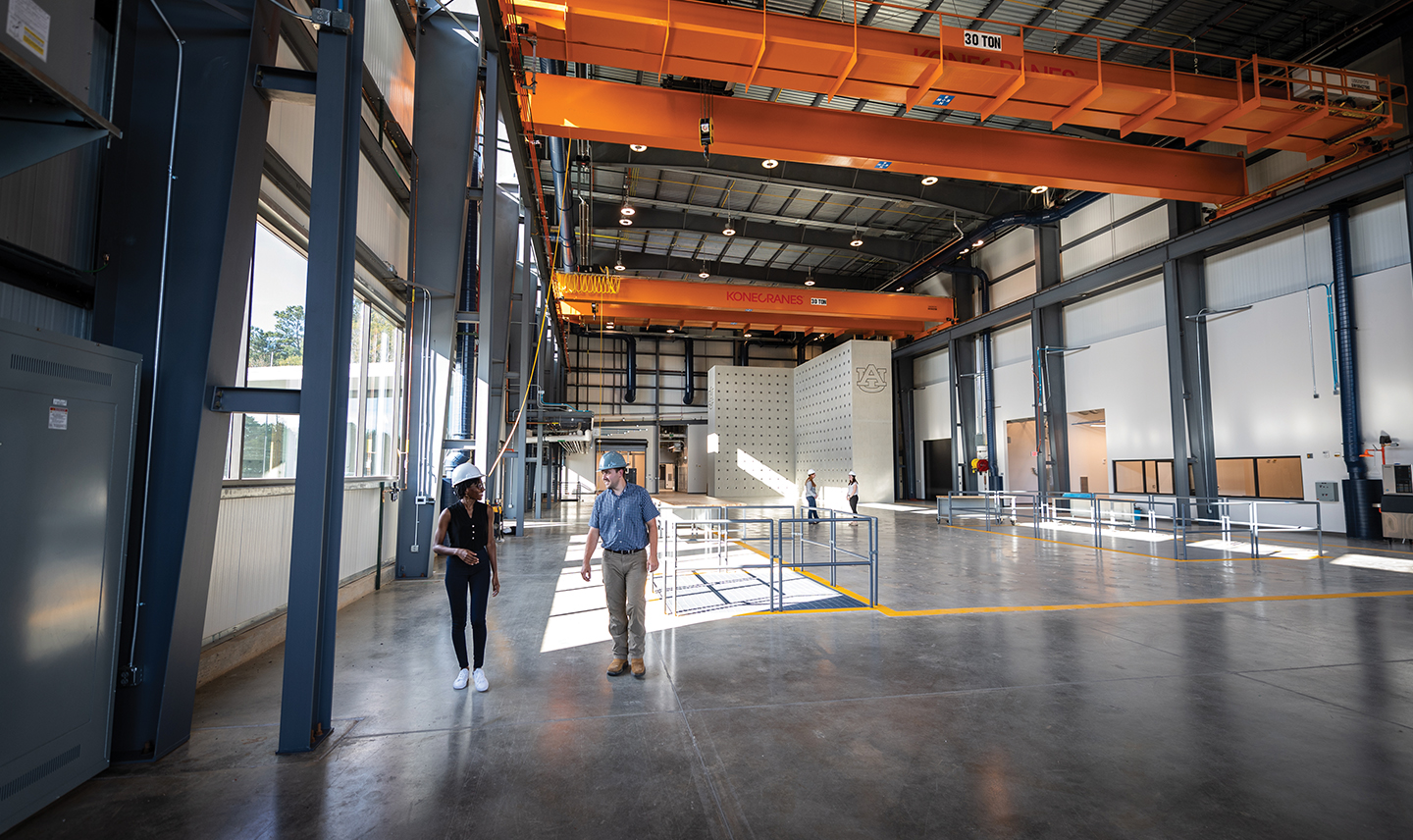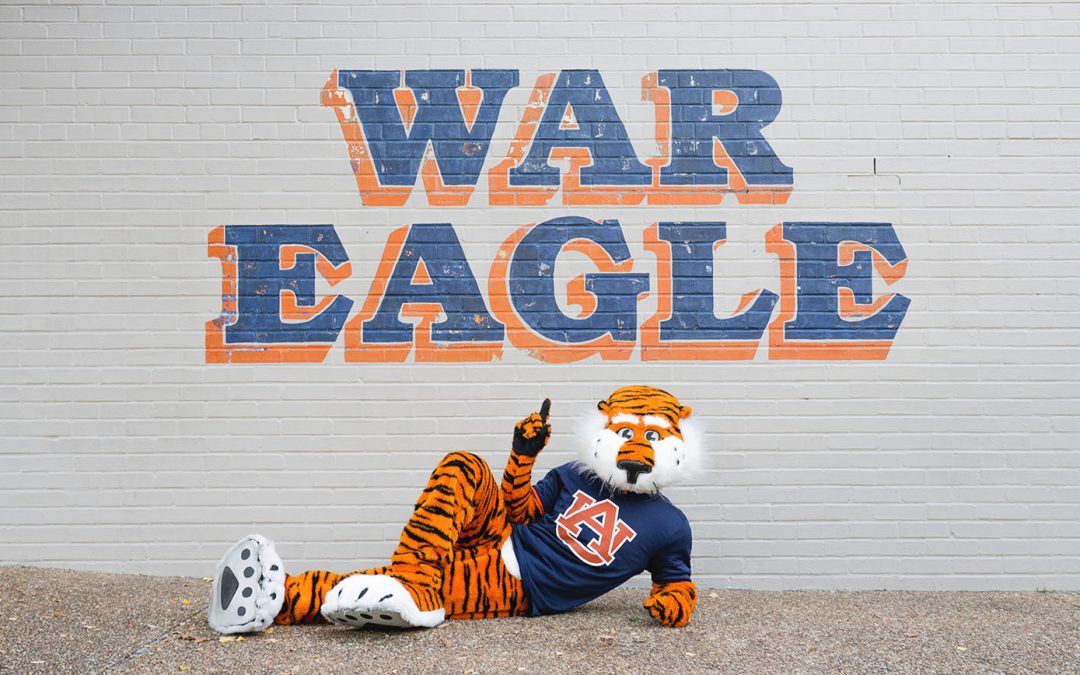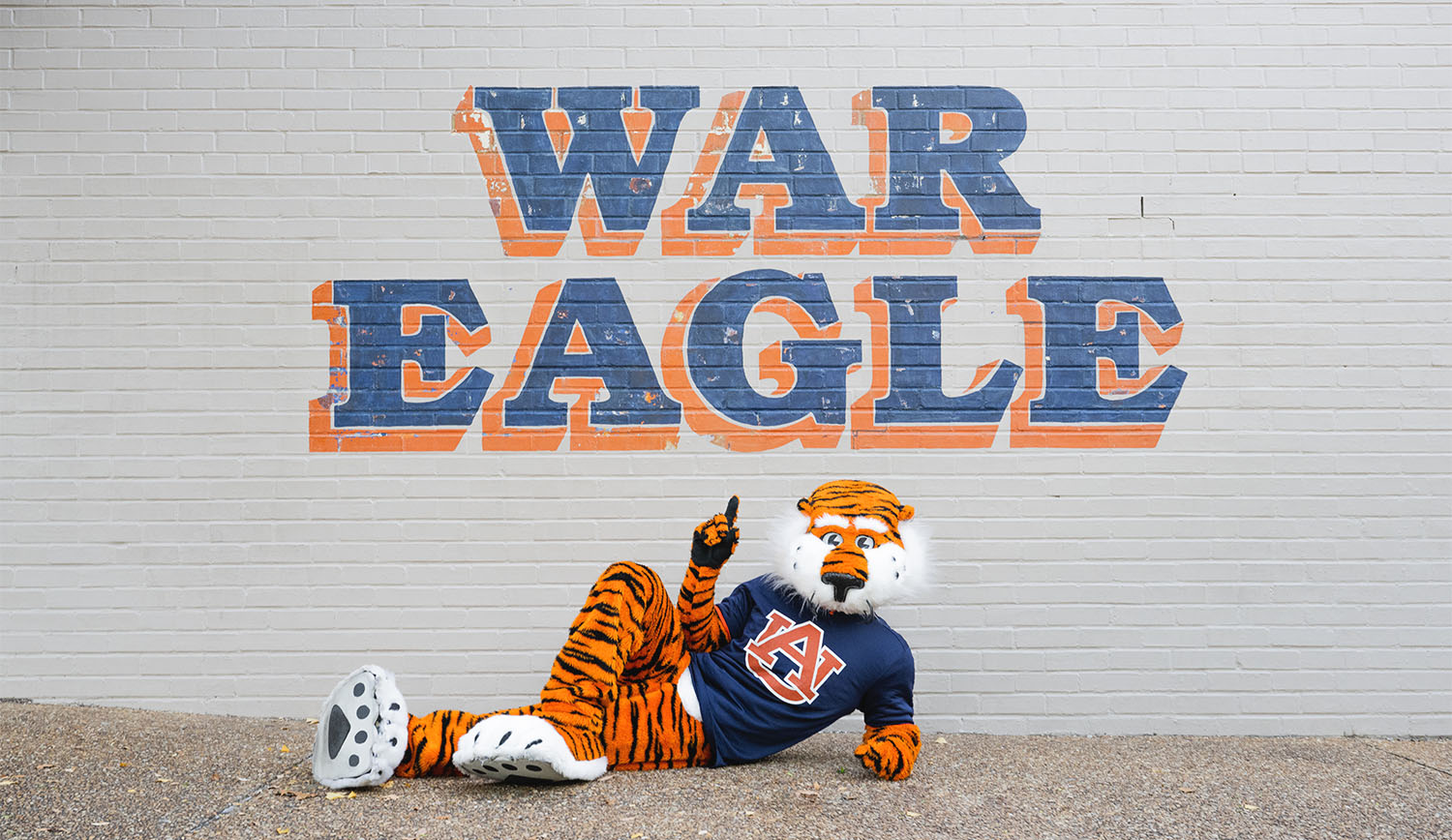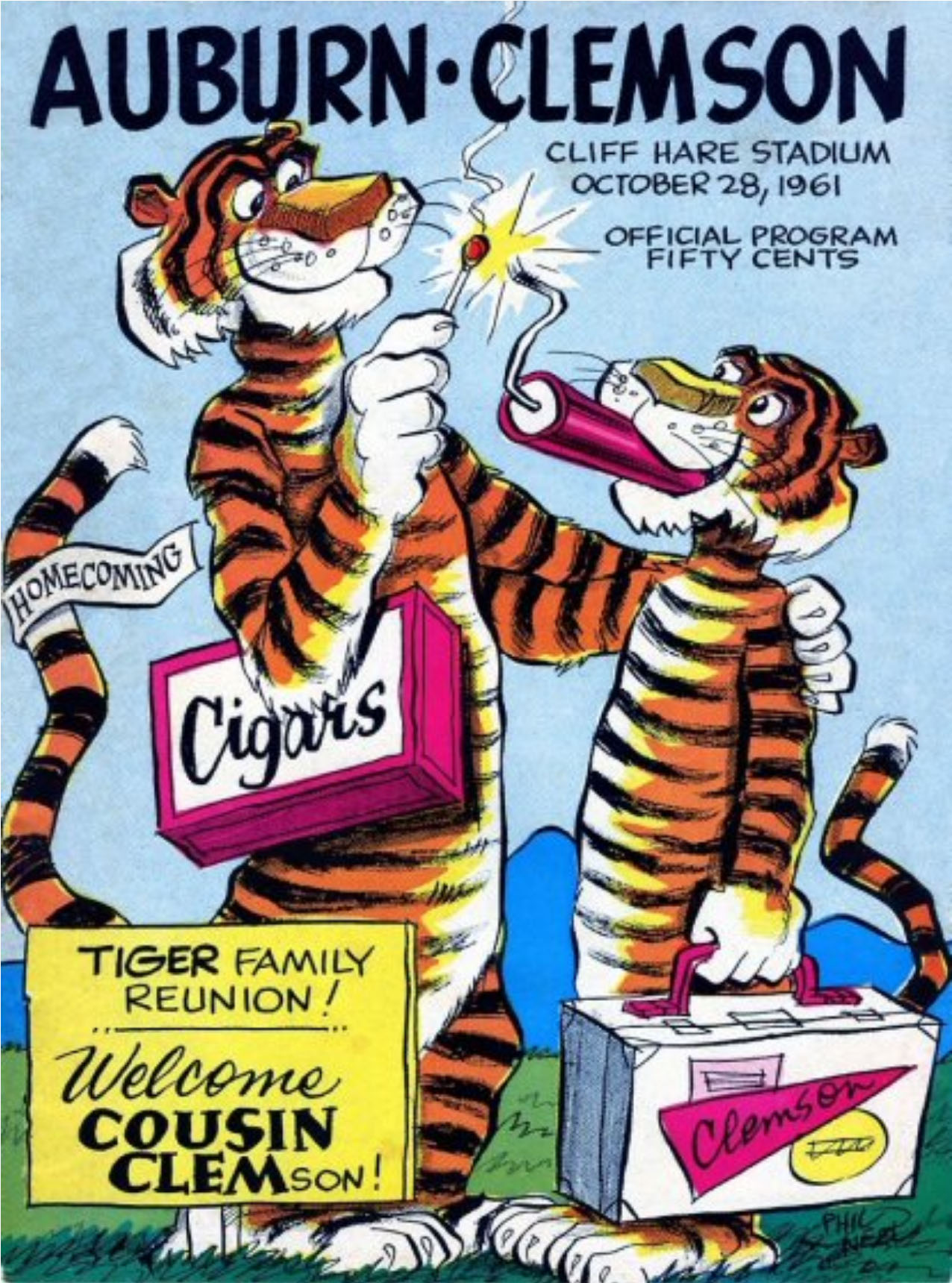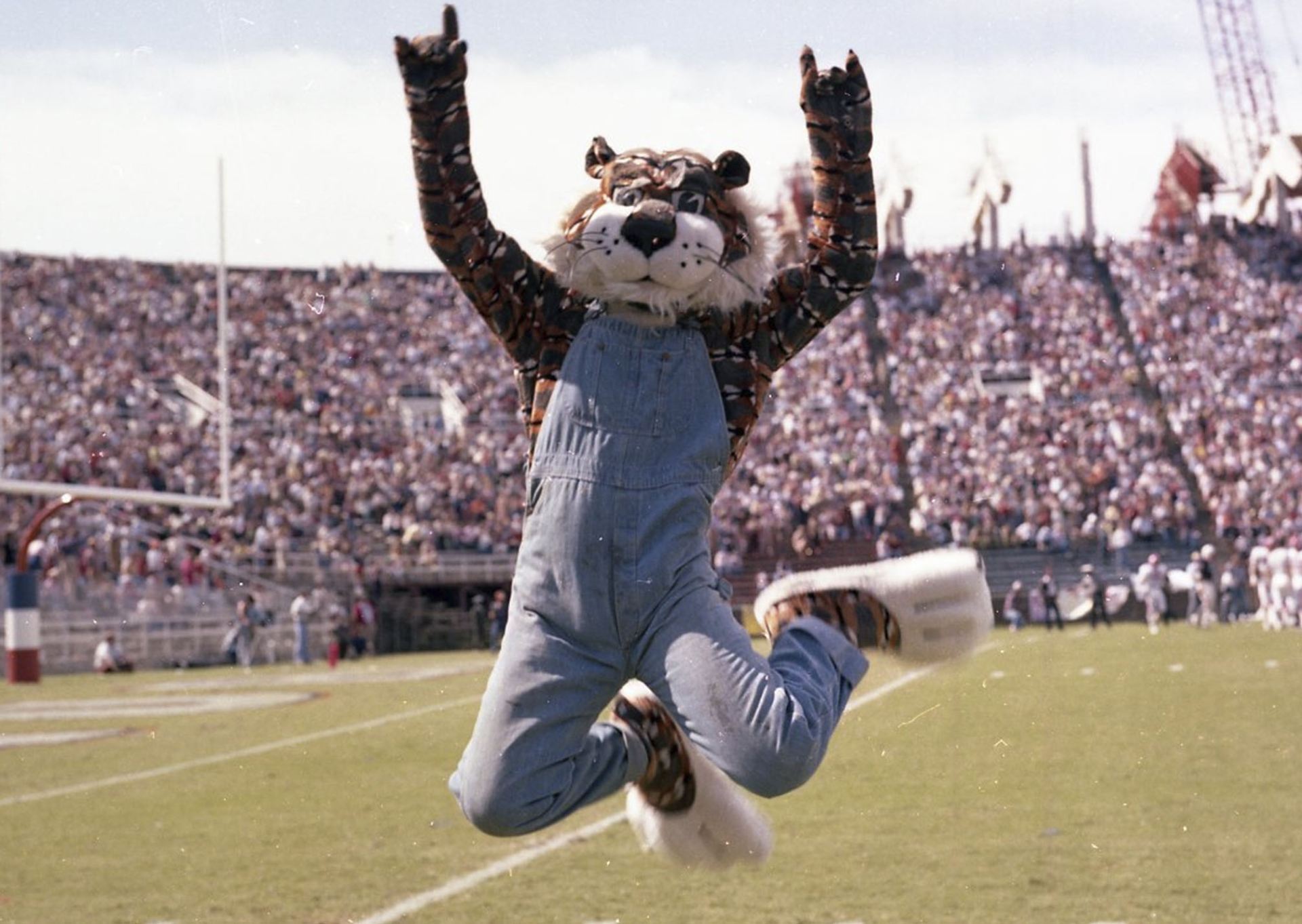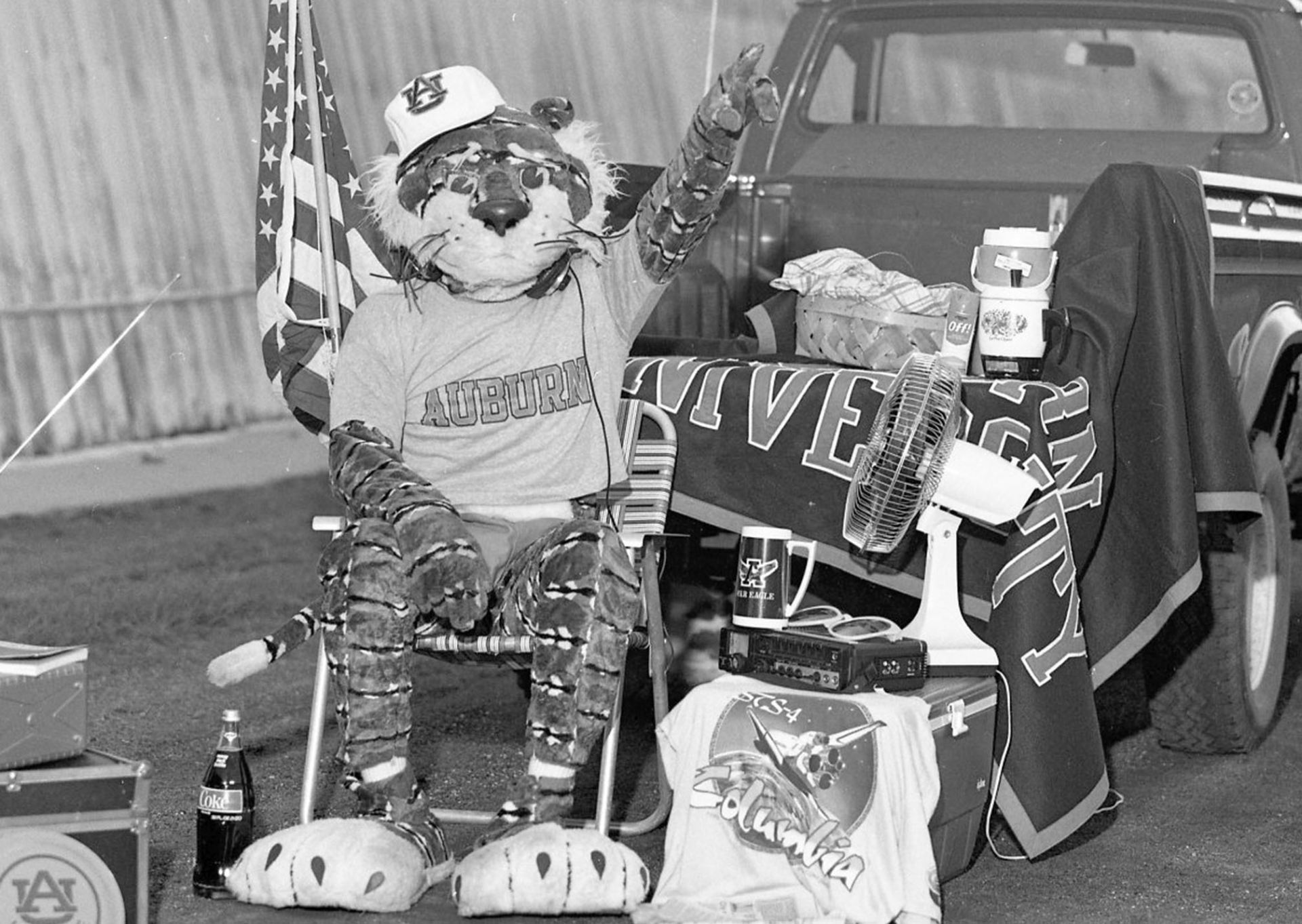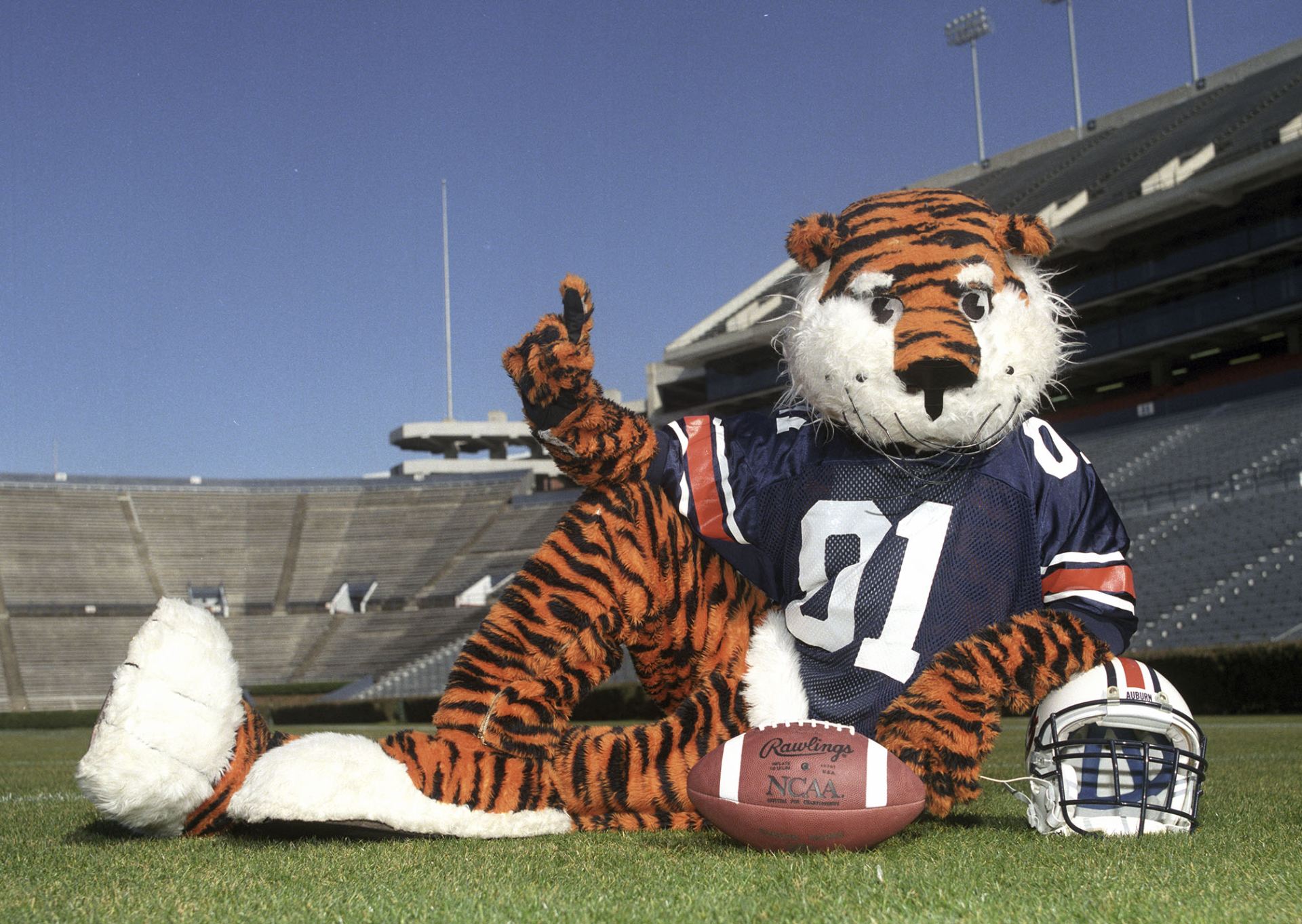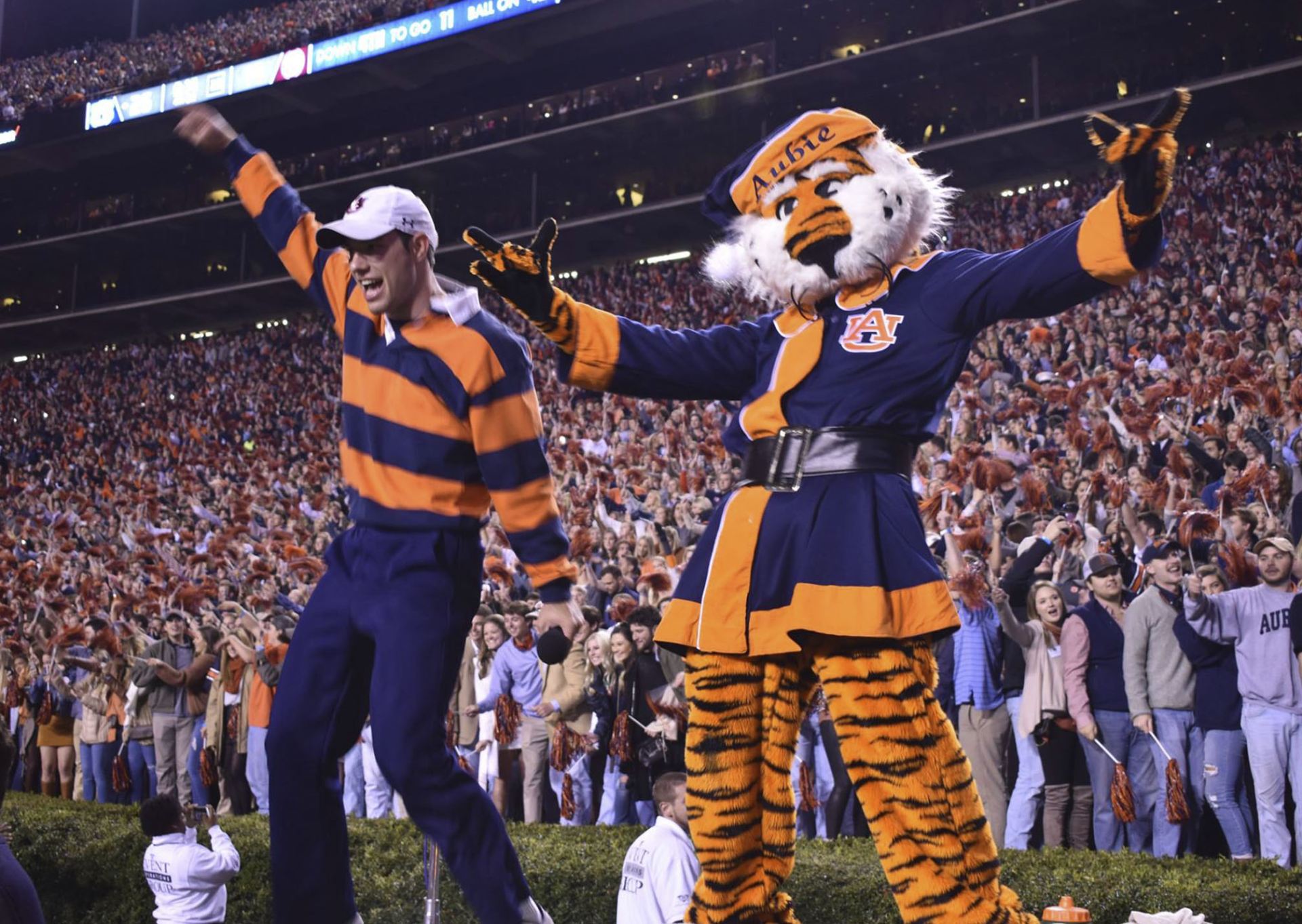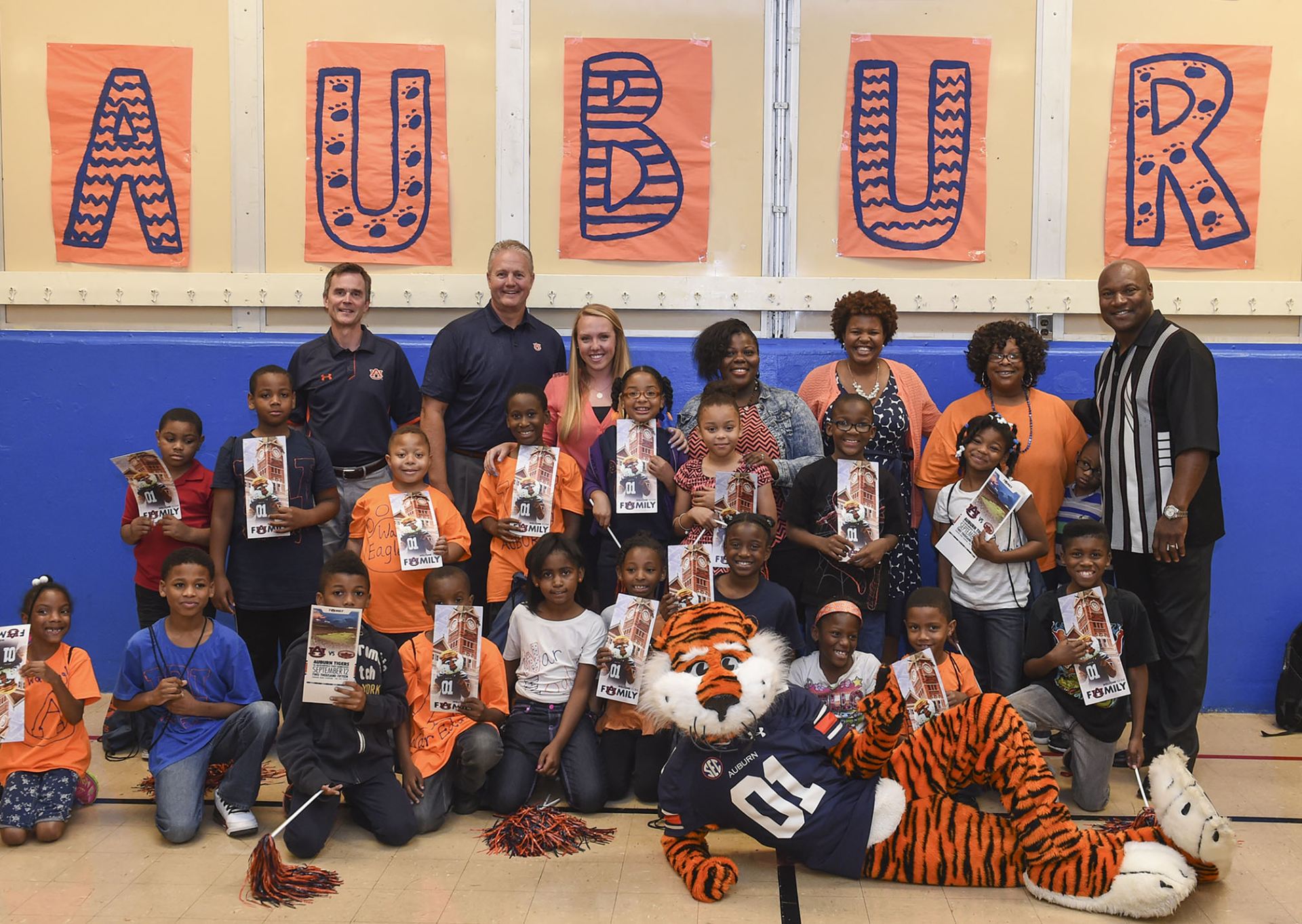Three Auburn alumni serve their Greek organizations as national presidents.

Floyd the Barber Tribute Artist is Keeping “The Andy Griffith Show” Alive
IT specialist by day. Floyd the Barber by night. How Allan Newsome ’89 became the man behind all things Mayberry.
By Jeremy Henderson ’04
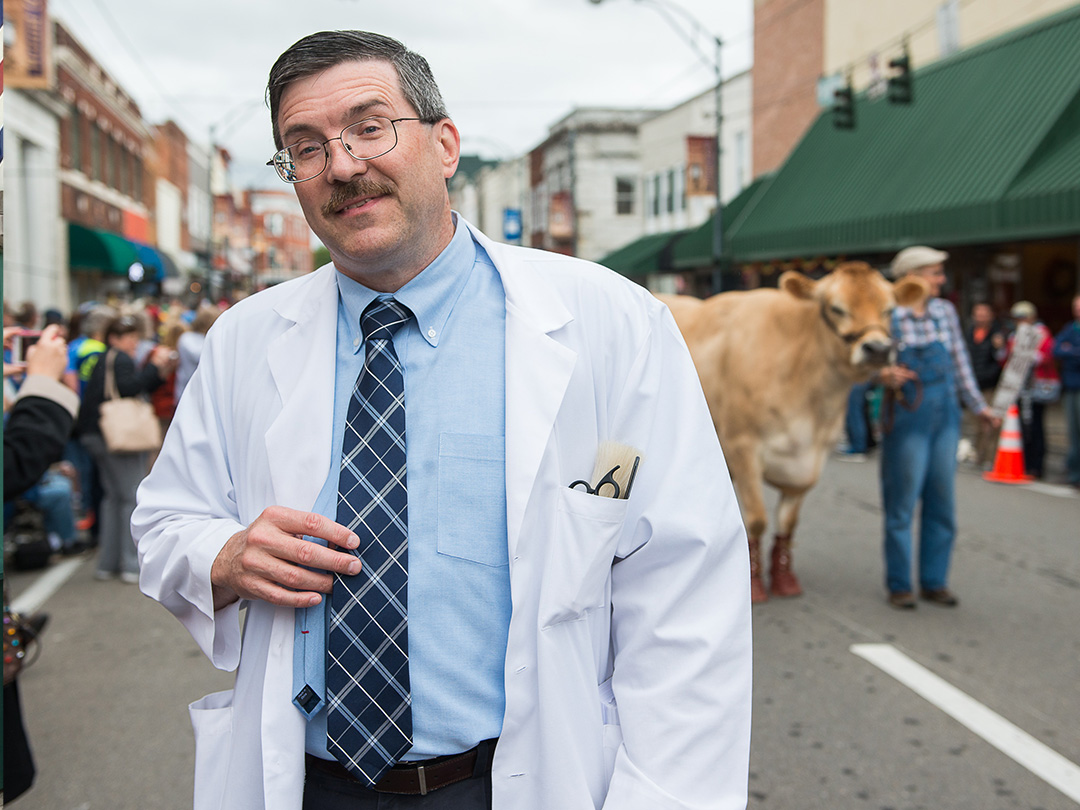
Allan Newsome can’t escape it. That trip to Auburn in 2016 or so is a perfect example. The family was down from Huntsville, Ala. for a campus tour. Newsome graduated in 1989 in electrical engineering; it was only natural to want his aspiring engineer son Adam to check out his old man’s alma mater.
They showed up and the student recruiter was great. She was selling the place—the college, the town. Allan had high hopes. Then it happened.
In the car, Adam had made him promise—no Floyd The Barber stuff. No talking with other parents about his double life or about how Auburn was like Mayberry or whatever. Allan agreed. He kept his mouth shut and played it straight. Even when they got lemonade at Toomer’s. He might have wanted to point out that it was like going to the Diner for a lemon phosphate, just like Sheriff Andrew (Andy) Taylor recommends to his deputy Barney Fife in the “Bank Job” episode. But he didn’t.
He didn’t have to.
“They started talking about the size of the town,” Allan says, “and then [the recruiter] goes, ‘you know, Auburn is kind of like Mayberry.’”
Adam turned and stared. Allan just smiled. He’s still smiling.
“He asked me if I’d told them to say that.”
Nope. But Adam, Allan says, should know better than anyone—that’s just what happens when your dad is Allan
Newsome. The show never stops and lines blur.
Allan Newsome—mustachioed IT specialist at Redstone Arsenal in Huntsville by day—is, hands down, the most influential member of a thriving community of “The Andy Griffith Show” aficionados large enough to spawn multiple annual events, dozens of books and even a popular Bible study curriculum. He is, to reference a Season Two classic, a keeper of the flame for fellow fans, having maintained practically every major Griffith fan site for more than 25 years, including WeaversDepartmentStore.com, an online emporium (named for Aunt Bea’s favorite place to shop) of Griffith kitsch and collectibles. His wife, Jan, handles the orders.
He just finished recording the 748th episode of his weekly podcast, “Two Chairs No Waiting,” another Season Two reference.
But his greatest contribution to the culture is, obviously, Floyd Lawson, the sitcom’s absent-minded barber.
Allan got hooked in college. Something about the simplicity, the clockwork regularity of episodes on at 5 and 10 p.m. helped keep him sane between exams.
“We’d need a break from studying and you’d just pop some popcorn and sit down and watch ‘The Andy Griffith Show.’”
Five years after graduating, he started living “The Andy Griffith Show.”
He was at a small “Mayberry meetup” in Gordo, Ala. quoting the show with fellow fans, including David Browning, whose Barney Fife act was a Mayberry meetup must for decades. Allan started doing Floyd’s “Bobby Gribble hates Emma Larch” routine from the “Case of the Punch in the Nose” episode. Browning loved it. He told Allan he should dress up as Floyd for Mayberry Days.
It was supposed to be a one-time thing. But for 29 years now, no one has left Mayberry Days without a picture with Allan Newsome, the world’s premiere (and only, as far as he knows) Floyd the Barber tribute artist. Mayberry Days is the big one.
It’s held annually in Andy Griffith’s hometown of Mount Airy, N.C., which has capitalized on the show’s phenomenal syndication success by branding itself—its official website is VisitMayberry.com and Allan is on the front page—the real-life Mayberry. (That the show references a couple of things on the Mount Airy map helps.)
Pilgrims can visit the Andy Griffith Museum, pose in a replica Mayberry courthouse and, yes, have their bangs trimmed at Floyd’s Barber Shop.
So, it’s kind of funny that the movie was mostly filmed in Indiana.
Yes, the movie “Mayberry Man” came out in 2021 and is still the big new thing to talk about. It’s the semi-autobiographical brainchild of Stark Howell, whose father appeared on the show in two episodes. It’s fiction, but it’s also practically a documentary. The gist: while attending “Mayberry Fest,” a Hollywood bad boy confronts his familial connection to “The Andy Griffith Show” and falls in love with the (actual) people who’ve fallen in love with “The Andy Griffith Show.”
And few, of course, have fallen as hard as Allan. Plenty of other tribute artists appear in the film. But Newsome stars. He plays himself playing Floyd. It’s a lead role. He’s fantastic.
Take that one scene. He’s in character, doing his thing. But as he’s getting deep about the importance of family with the protagonist, he subtly fades from Floyd to Allan. And then subtly back to Floyd. It’s wild.
“A lot of people talk about that scene,” he says. “People at the premiere asked me how long I’d been acting. They told me ‘that’s really hard to do.’”
Allan has been doing it (“I found out it’s called method acting”) pretty easily for 30 years now. Going back and forth. For the movie, it was intentional. But sometimes it’s not.
They’ll be talking at dinner and all of sudden Jan will stop him.
“Now come on, Allan, that sounded just like him!”
Allan will swear it didn’t. Jan will swear it did. Allan will laugh. Hey, if it’s true—if the lines do blur a little—that just comes with the territory. After three decades, even when he tries to hit pause, the show won’t let him.
It’s like when they got back from that campus tour.
Adam ultimately wound up elsewhere than the Loveliest Mayberry on the Plains. But Auburn tried its hardest.
Allan’s still smiling about it.
“I’m serious—there was a voice message from a guy from Auburn wanting to talk to Adam,” he says.
“He said his name was Andrew Taylor.”
Going Greek
Harvesting a Legacy
Three generations and counting contribute to a growing pecan farm’s success.
Courtside Career
Taylor Korn ’22 lives out her dreams on the sidelines of the biggest games
Going Greek
Three Auburn alumni serve their Greek organizations as national presidents.
Harvesting a Legacy
Three generations and counting contribute to a growing pecan farm’s success.
Courtside Career
Taylor Korn ’22 lives out her dreams on the sidelines of the biggest games
